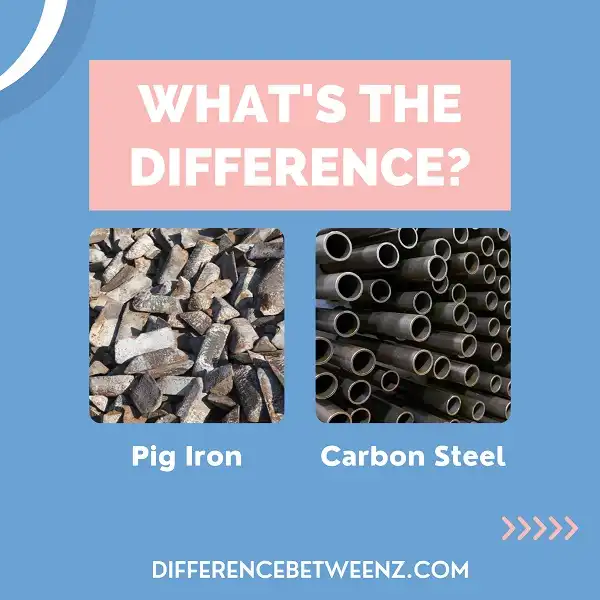What are the differences between pig iron and carbon steel? Both are types of industrial metal, but what sets them apart? This blog post will explore the key characteristics of both materials, as well as their respective applications. Stay tuned!
What is Pig Iron?
Pig Iron is a type of crude iron that is made by smelting iron ore in a blast furnace. It is the basic raw material used to make steel. Pig iron is made up of about 90% iron and 3-5% carbon, along with other impurities such as sulfur, manganese, and phosphorus.
- Because it contains more carbon than steel, pig iron is much harder and stronger than raw iron, but it is also more brittle. It is used as a feedstock for steelmaking and other iron-based processes.
- Pig iron can also be used to create ductile iron, which is a type of cast iron that contains less carbon and is more malleable. In order to create pig iron, the blast furnace must be operated at a high temperature, typically around 1,600 degrees Celsius.
- The molten pig iron is then poured into molds where it solidifies. Once it has cooled and solidified, the pig iron can be processed further to remove impurities or to create different types of iron products.
What is Carbon Steel?
Carbon steel is a type of steel that contains between 0.2% and 2.0% carbon by weight. Carbon steel is widely used in a variety of applications, including construction, automotive, and aerospace. It is strong and durable, making it an ideal material for a variety of applications. Carbon steel can be heat-treated to increase its strength and hardness. This makes it an ideal choice for applications where high strength is required, such as in automotive parts and construction equipment. Carbon steel is also relatively easy to weld, making it a popular choice for many fabrication applications.
Differences between Pig Iron and Carbon Steel
Pig iron is made by smelting iron ore in a blast furnace. The resulting product is a high-carbon alloy that contains between 2 and 4 percent carbon as well as smaller amounts of silicon, manganese, and trace impurities.
- Carbon steel is also made from iron ore, but it contains less carbon (usually no more than 0.5 percent), and other impurities such as manganese, sulfur, phosphorus, and oxygen are also removed.
- This results in a lower-carbon alloy that can be more easily shaped into finished products. Both pig iron and carbon steel are used in a variety of applications, but their different compositions make them suitable for different tasks.
- For example, pig iron is often used to create cast iron products such as pipes and manhole covers because it is more durable and resistant to corrosion than carbon steel.
Carbon steel, on the other hand, is often used in the construction of buildings and bridges because it can be easily formed into the required shapes and has a high strength-to-weight ratio.
Conclusion
While pig iron and carbon steel have some similarities, there are also key differences between the two. Understanding these differences can help you choose the right type of steel for your next project.


